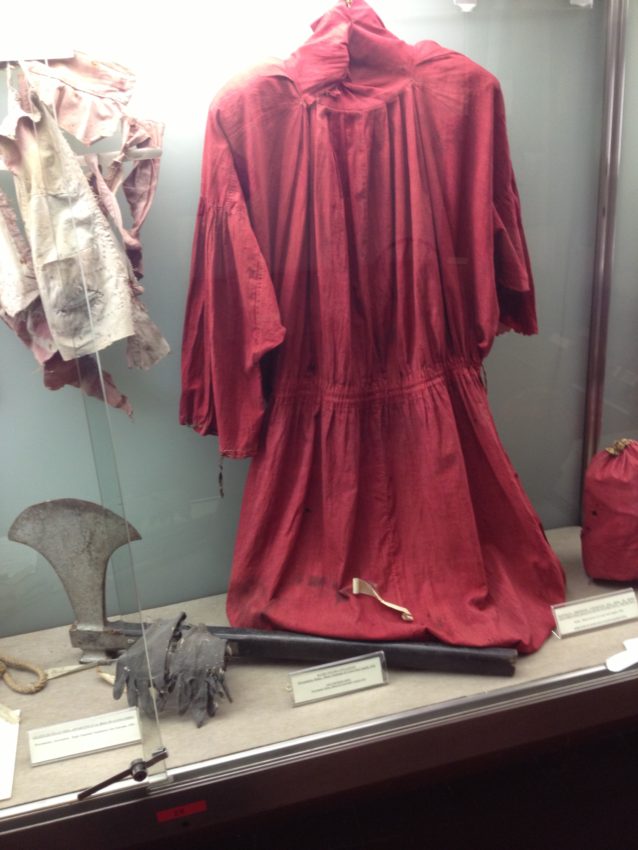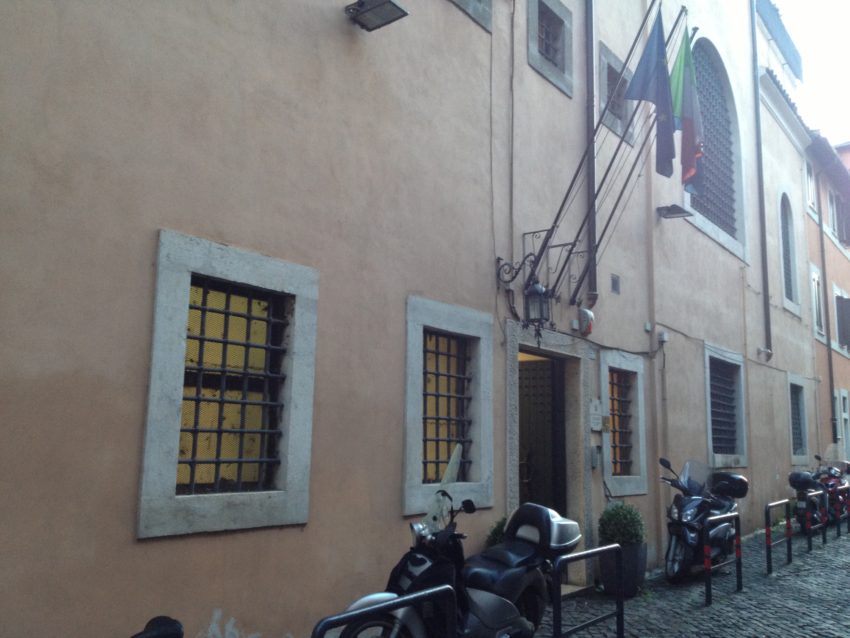Retired in Rome Journal: Rome’s crime museum a macabre way to while away an afternoon





I must write another story about Rome off the beaten path. You can start with the museums. A random search found a list of 56 of them. That doesn’t count the churches which basically are free Renaissance art tours. I remember touring the Pasta Museum and learning there are more than 600 different forms of pasta. Yesterday, I toured Rome’s crime museum and learned there are about that many forms of torture.
The Museo Criminologico is about a three-minute walk from my apartment. It’s down Via Giulia where I walked past a crowd of men standing on opposite sides of the narrow cobblestone alley. One group was official looking with coats and ties and hats. The other seemed like middle-aged passersby or photographers. But I saw no cameras. I saw no notepads. It was office of the anti-mafia commission. How many mobsters had been hauled in there, the paparazzi snapping away, I really wanted to know.
When Rome finally fell in 410 AD, everyone invaded and Rome’s population dropped from 1 million to about 20,000. Picture metro Denver with the population and general level of sophistication of Montrose and you have Rome in the Dark Ages.
With Rome down and beaten, the Catholic Church in the Vatican became more powerful. It ruled from 754 for about the next 1,000 years. Rome’s crime museum is great insight into what savage acts against humanity the church oversaw.
You can’t miss the crime museum. Not ironically, it’s built in an 18th century prison. It’s four stories tall and bars remain on the little windows where the cells were. The first few rooms are chock-a-block with torture devices. There’s the iron maiden which opens up just enough to fit a body. But the open doors have sharp long spikes at about the stomach level. When they closed the door, you’d scream until you ran out of blood.
There’s a skeleton placed in a makeshift cell. The cell is fake but the skeleton isn’t. It was found in 1933 inside a ruined tower of the palace in Poggio Catino just northeast of Rome. The English description said she was a 16th century woman held hostage by the Orsini family when it captured the palace. She was the wife of Geppo Colonna, lord of the Poggio Catino. She apparently cheated with another nobleman so Geppo did what most Italian men wish they could do to this day: He locked her up in an underground cell and left her to starve to death. I noticed there was a battered tin cup next to her femur.
I learned a couple of handy Italian words from some of the descriptions. Polso means wrist. Polso appears a lot in this museum. There are a lot of stocks, the wooden contraption with holes for the neck and wrists. Beggars, vagrants and adulturists were placed in these and then left to get ridiculed in the public square.
But this museum was different than most torture museums I’ve been to. The one in San Marino may be the best in the world. Rome’s museum, however, has stories, gruesome, horrific stories that make you wonder about the soul of man. It starts with the Catholic Church. It supervised public executions, seemingly daily. They were considered public events, not to mention great ways to prevent stealing and cheating on your spouses.
There’s the story displayed in a series of harrowing drawings from 1599. Beatrice Cenci, 23, and her stepmother, Lucrezia Petroni, were accused of killing their stepfather and husband, Francesco Cenci. The first drawing showed them bashing his head in with a stone. Then they showed them throwing him off a balcony. Later they comically tried to explain to officials that he accidentally fell. Obviously, that didn’t work because the next panel showed their stepbrother, Giacomo, an accomplice, getting tortured with red-hot pincers, then bludgeoned in the head and hung on a meat hook. Another showed the two women being beheaded, their blood rolling down a little gutter extending from the bottom of the guillotine as displayed in the next room. Witnessing all this was Barnardo, Giacomo’s brother, who couldn’t exact any revenge. He was condemned for life. They were all executed in front of Castel Sant’Angelo, the same square I walk through to get from Centro Storico to my old neighborhood in Prati.
There was a display of the always lovely spiked chastity belt which adds a new term to dating: A Surprise Ending. There’s also a drawing of one Robert-Francois Damiens whose four limbs are tied to four horses who quartered him in 1757 for trying to assassinate King Louis XV.
Then there was the display case honoring Massimo Titta, the Mickey Mantle of Rome executioners. He beheaded 516 people between 1796-1865. That’s 69 years as an executioner. Either the historians’ dates are off or he wielded a mighty ax when he was very young and very old. His ax on display looks like it’d still cut up a side of beef pretty quickly even 200 years later. His cloak in the window is red but I couldn’t tell if it was the material or dried blood.
Another story dealt with a young 25-year-old soldier named Andrew Leonard. He was sent to fight Napoleon’s troops in Calabria and Sicily. He was caught deserting in 1806 and placed in an iron cage in which he hung inside Milazzo Castle until he died.
Lots of guillotines show various ways to collect the heads. There’s the basket under the blade. There’s the drain where the blood flows away from the executioner’s shoes. The French introduced the guillotine to Rome when it went under Napoleonic rule in about 1800. When the Vienna Congress gave Rome back to the pope in 1815, he kept the guillotine, calling it a quick and clean form of execution. The popes established three places of public beheadings: Plazza di Ponte Sant’Angelo, Piazza del Popolo and Via dei Cerchi, just across the river from Trastevere. They continued lopping off heads until 1870.
My favorite story was of a newspaper editor named Felice Cavallotti who got so fed up with public attacks by a critic, Ferruccio Macola, he challenged him to a duel. Cavallotti, editor of the Gazzettino di Venezia, killed Macola by sticking a sword through his mouth. That shut him up — in more ways than one.
I was pretty disappointed they had nothing on the Mafia, considering the anti-Mafia office is right down the street. This was more of a torture museum than the business of crime, although one room is totally dedicated to fake masterpieces and the tools the frauds used. Still, the museum makes it seem like crime stopped in Rome in the 20th century when actually the real bad stuff was just getting started. I kept thinking back to 1992 when Giovanni Falcone, the leading anti-Mafia judge in Sicily, was driving back from the Palermo airport with his wife. They were blown to bits by 1,100 pounds of explosives.
Too bad they don’t have the guillotine now.


February 7, 2014 @ 9:48 am
Wow great story telling. It has been freezing cold here, what a crazy winter